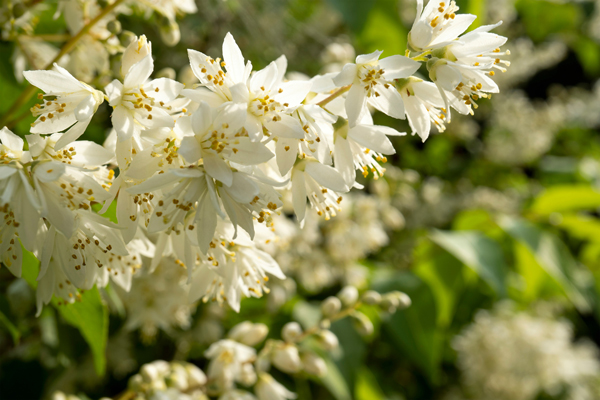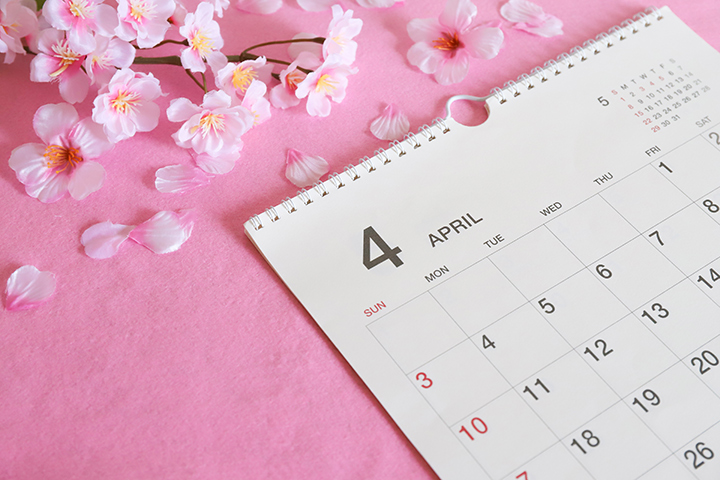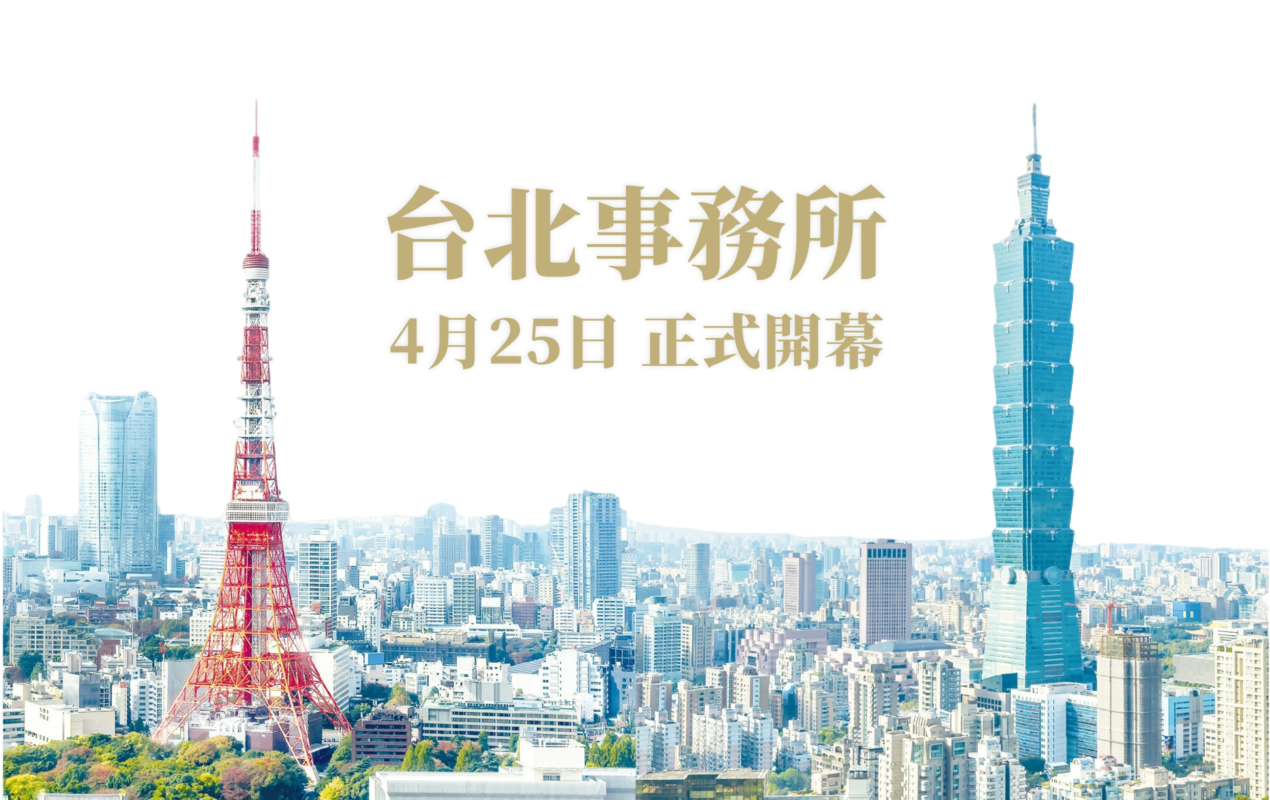Ueno Station is located at the north of Tokyo Station. There is Ueno Park around the station, and there are Ueno Zoo and many museums nearby. Therefore, people may have a strong impression that it is a tourist destination.
The area around Ueno Station is one of the most popular downtown areas in Tokyo, and it is also the northern gateway to Tokyo when heading to the Tohoku region. Recently, the number of foreign tourists visiting Ueno Station has been increasing.
In this article, we will introduce the basic information about Ueno Station, including its history, prospects, and recommended spots.

Basic information about Ueno Station, a key point representing downtown Tokyo
Ueno Station is in Ueno, Taito-ku, Tokyo, which has a lot of nature and an old-fashioned downtown atmosphere such as temples and parks. It is a terminal station in the northeastern part of the Yamanote Line and is served by many conventional lines, shinkansen, and subway lines.
The place name "Ueno" originated from the fact that in the early Edo period, there was a daimyo's residence of Iga Ueno (now Iga City, Mie Prefecture) in the current Ueno Park.
In addition, Ueno Station is characterized by many exits, and due to the proximity of the Ueno Zoo, people can also see exits with unique names such as "Panda Bridge Exit". In front of the panda bridge entrance is a two-meter-high giant panda statue.
According to the data on the number of passengers by station released by the Ministry of Land, Infrastructure, Transport and Tourism in 2022, the average number of passengers at Ueno Station in 2021 was 244,170 per day, which is the 14th highest station in JR Japan.
Source: Ministry of Land, Infrastructure, Transport and Tourism National Land Numerical Information Download Site "Number of Passengers by Station Data"
Source: Statistical Information Research "Statistics on the number of passengers at Ueno Station (JR East Japan)"
Crowd levels in Ueno Station per weekly is as follows.
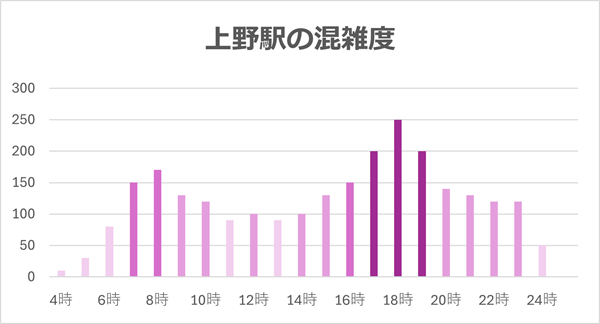
* Created independently by processing from JR East Japan's official website "Station Crowding Situation" and NAVITIME "crowd predictor."
* Classified into four crowd levels according to the numbers on the vertical axis. Very crowded (200~250), crowded (150~200), not very crowded (100~150), vacant (0~100)
On weekdays, the crowd tends to increase during the time of 17~19 o'clock, this is the rush hour of the day when people go home. Moreover, there are many shopping streets around Ueno Station, such as Ameyoko and Nakamachi Street, so it is conceivable that people will gather here to have meals.
On weekends and holidays, the number of tourists visiting Ueno Park and Ameyoko increases, and it tends to be continuously crowded with passengers from 10 to 18 o'clock.
Train Lines serve Ueno
Ueno station is served by a total of thirteen train lines, including the following.
JR East Japan
● Joban Line Rapid
● Ueno Tokyo Line
● Utsunomiya Line (Tohoku Main Line)
● Takasaki Line
● Yamanote Line
● Keihin Tohoku Line / Negishi Line
● Tohoku-Hokkaido Shinkansen
● Akita Shinkansen
● Yamagata Shinkansen
● Joetsu Shinkansen
● Hokuriku Shinkansen
subway
● Tokyo Metro Hibiya Line
● Tokyo Metro Ginza Line
With these lines, people can reach Asakusa (Tokyo) in the east, Shibuya (Tokyo) in the west, Yokohama (Kanagawa) and Atami (Shizuoka) in the south, and Shin-Hakodate Hokuto (Hokkaido) in the north. If you are in Tokyo, you can also access Ginza (Ginza Line, Hibiya Line), Roppongi, Ebisu, Nakameguro (Hibiya Line), etc. without transfer.
Ueno Station is adjacent to Keisei Ueno Station, and people can also use the Keisei Main Line to go to Narita Airport in one line.
In addition, there are the following two stations with "Ueno" in the vicinity of Ueno Station. Both stations are accessible within a 5-minute walk from Ueno Station.
● Ueno Hirokoji Station (Ginza Line)
● Ueno Okachimachi Station (Oedo Line)
Within a 15-minute walk from Ueno Station, there are Yushima Station, Nezu Station, and the Tokyo Metro Chiyoda Line.
Access to major stations and airports from Ueno Station Here are the main ways to get to major stations and airports from Ueno Station, and the time it required.
● Tokyo Station: 1 stop on the Ueno-Tokyo Line
● Shibuya Station: 15 stops on the Ginza Line
● Shinjuku Station: 12 stations on the Yamanote Line (clockwise)
● Ikebukuro Station: 8 stops on the Yamanote Line (clockwise)
● Shinagawa Station: 3 stops on the Ueno-Tokyo Line
● Haneda Airport (Terminal 2): Transfer at Hamamatsucho Station on the Yamanote Line (counterclockwise) and take the Tokyo Monorail (toward Haneda Airport Terminal 2, Airport Rapid) for 3 stops
● Narita Airport (Terminal 1): From Keisei Ueno Station, take the Keisei Skyliner (limited express to Narita Airport) for 3 stops (Narita Airport Station)
From Ueno Station, Haneda and Narita airports can be reached in less than one hour, and other major stations on the Yamanote Line can be reached in less than 30 minutes.
Sightseeing spots that can be reached directly from Ueno Station
Ueno Station is served by five Shinkansen lines, so people can access the following sightseeing spots directly.
● Akita (Akita Shinkansen)
● Yamagata (Yamagata Shinkansen)
● Sendai, Shin-Hakodate Hokuto (Tohoku-Hokkaido Shinkansen)
● Karuizawa, Kanazawa (Hokuriku Shinkansen)
● Niigata (Joetsu Shinkansen)
Ueno is also known as the gateway to the north and is characterized by its prominent level of convenience to Tohoku, Hokuriku, and Joetsu. In March 2024, the Hokuriku Shinkansen will be extended to Fukui, further improving accessibility to the Hokuriku region.
If people use the limited express of the conventional line, they can also access Hitachi (Limited Express Hitachi) in Ibaraki Prefecture and Naganohara Kusatsuguchi (Kusatsu Onsen) in Gunma Prefecture (Limited Express Kusatsu Shiman). In addition, people can go to Utsunomiya (Utsunomiya Line), Omiya, Yokohama (Keihin Tohoku Line), Kairakuen (Joban Line), etc.
The atmosphere of the Ueno Station areas, which are familiar to Japanese and foreigners
The area around Ueno Station is characterized by the coexistence of the “Yamate” area and “Shitamachi.” “Yamate” refers to the area where samurai residences spread during the Edo period, while “Shitamachi” means the area where the civilians lived. Specifically, the area around Hongo, Bunkyo Ward, which spreads to the west of present-day Ueno Station, is also part of Yamate. The area that extends to the east side of Ueno Station toward Asakusa is Shitamachi. There are many temples, public baths, and old-fashioned shopping streets; thus, people can enjoy the downtown atmosphere there.
JR Ueno Station is adjacent to Ueno Park, and there are many historical, cultural, and artistic attractions such as Ueno Zoological Park, Tokyo University of the Arts, and numerous museums. In the Ueno Park area, you can enjoy cherry blossoms in spring and gourmet events are also held at the same time. The ease with which you can enjoy sightseeing spots and events is also an attraction of living in the Ueno Station area.
Near the station, commercial businesses such as Ameyoko Shopping Street have developed, and many shopping streets and commercial facilities are located. The Atré in the station building and the Ecute inside the Ueno Station are also convenient for daily shopping. There are many drugstores, discount stores, and reasonable apparel shops in Ameyoko. People can find everything they need around the station. Although it is a station on the Yamanote Line, its item prices and rental fees are cheaper than in Chiyoda Ward and Minato Ward.
On the east side of Ueno Station, new condominiums have been built gradually in recent years, and housing development is progressing.
The number of foreigners living in the Ueno Station area (Taito Ward) is 18,485, half of them is Chinese and Korean. The Ueno Station area is famous for its substantial number of Chinese restaurants from the past, in recent years, there has been an increase in the number of authentic Chinese restaurants run by Chinese people. In addition, there is also a Korean Town on the east side of Ueno Station (toward Asakusa), and there are supermarkets and Korean restaurants specializing in Korean ingredients, so it can be assumed that many Chinese and Koreans are living around Ueno Station.
Ameyoko Shopping Street has many Asian food stalls like Taiwanese night markets, so the number of Taiwanese, Filipino, and Vietnamese residents is also conspicuous.
The atmosphere around Ueno Station is familiar not only to Japanese people who have lived here for a long time but also to people from Asian countries. It is one of the charming points of the Ueno Station area.
Ueno Station has been and will continue to play a role as a center of cultural creation
Ueno Station was temporarily opened in 1883 as a station between Ueno to Kumagaya (Saitama) of Japan Railways. When the Ueno to Takasaki (Gunma) line opened in 1884, the main brick-made station building was completed by the following year. The reason Ueno Station was established as the starting station is that it is easy to access the northern Kanto and Tohoku areas as a place where the Nikko Kaido passes.
In 1905, the Joban Line, which had been running towards Ibaraki, began to pass through Ueno Station directly. In 1909, Akihabara to Ueno to Aomori (Tohoku Main Line) and Karasumori to Shinagawa to Shinjuku to Ikebukuro to Tabata to Ueno (Yamanote Line) started to operate, and Ueno Station became one of them.
With the operation of the Keihin Tohoku Line in 1925, an elevated passenger line connecting Ueno Station and Shimbashi Station was also opened in the same year. At the same time, the circular operation of the Yamanote Line began. Ueno Station functions as a station that connects the Yamanote Line, which connects major stations in Tokyo, with long-distance trunk lines to Tohoku, Tokiwa, and Takasaki.
In 1927, the first subway in Asia was born between Ueno to Asakusa (now the Ginza Line).
Ueno Station was a typical gateway for returning visitors. In 1965, about 900,000 people used the Station within five days from August 10 to August 14. The population of Setagaya Ward is about 910,000 (as of March 2024), it is as if the people of Setagaya Ward flooded into Ueno Station all at once within five days. For passengers who could not catch the train, station staff set up a large tent as a waiting area for those passengers.
In the Heisei era, the Tohoku Shinkansen was extended to Tokyo Station in 1991, and the Ueno-Tokyo Line started its operation in 2015. Since then, Ueno Station has become a transit station to various places.
Currently, the area around the station is undergoing redevelopment, and in 2020, the "Ueno Station Park Exit" was reopened. In January 2024, a station-type showrooming (*) space integrated with large-scale signage was opened. In a place of traditional culture and art, Ueno Station aims to be an area that develops art, music, and Japanese performing arts based on the concept of "a hub for cultural creation."
* Before purchasing a product, go to the store to check the products and services, and purchase the product online.
Recommended places to visit near Ueno Station
Around Ueno Station, there are spots where people can enjoy shopping and snacks at a reasonable price, spots where people can feel nature, and spots where people can learn about history and culture. Here are some sightseeing spots worth visiting around Ueno.
From eating to daily shopping, you can be satisfied here-"Ameyoko Shopping Street"
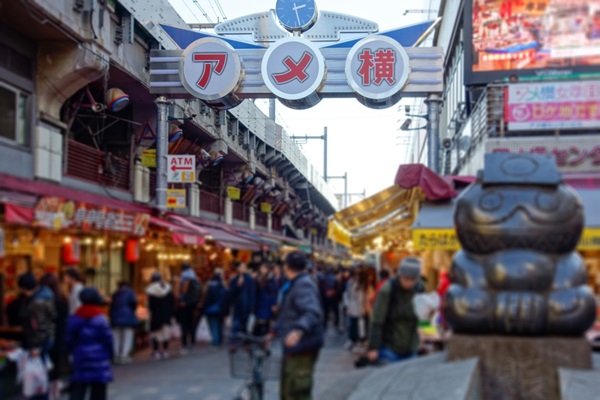
From the south side of Ueno Station to the north side of Okachimachi Station, the Ameyoko Shopping Street runs for about five hundred meters along the railroad tracks. This area was severely damaged in World War II, and it is a place that symbolizes post-war reconstruction.
After the war, from around 1947, the government conducted the distribution to deal with the shortage of supplies. During that time, "black markets" were held in various parts of Tokyo to store goods that had flowed in through officially prohibited distribution channels and Ameyoko is one of them.
In the beginning, there were several stalls selling candy, which were popular with people who wanted "sweets", which were scarce at the time. Due to the popularity of candy shops, the number of candy shops has increased gradually, so it has come to be called "Ameya Yokocho", and it is said that this is the origin of the name Ameyoko.
The remnants of "Ameya Yokocho" remain today. Fruit candy, which is popular in Korea and made with seasonal fresh fruits, is a specialty of Ameyoko. The candy is suitable for eating while walking. In addition to candy stores, there are grocery stores such as fish stores and confectionery specialty stores, as well as specialty stores of various genres such as daily necessities, imported goods, cosmetics, and apparel shops. It attracts not only residents but also tourists from all over the country and even overseas.
Ameyoko is also famous for having many restaurants and taverns. At Uokusa, a tavern, people can enjoy fresh seafood and Japanese Sake from all over the world, and rare Mouka star (shark heart). At "President", which is a famous tavern among alcohol lovers, people can order stewed "kusaya" (a specialty of the Izu Islands and fermented fish such as horse mackerel). It is also attractive that people can enjoy Japanese sake at a low price.
The freshness, price, and assortment of products are on par with the market-"Okachimachi Yoshiike Main Store"
Next to Ueno Station, in front of Okachimachi Station, is the Okachimachi Yoshiike Main Store Building, which houses the Okachimachi Yoshiike Honten supermarket, which serves fresh fish. It is about a 10-minute walk from Ueno Station.
It boasts a history of more than one hundred years since its predecessor, a fresh fish retail store, opened in Minato Ward in 1920. In 1933, it moved to its current location, and the head office building was completed. Currently, it has two basement floors and nine floors above ground, and houses not only a supermarket but also a fast fashion shop, a handicraft supply store, and a restaurant.
The highlight is the floor exhibiting fresh fish. It is also characterized by a large space to display not only sashimi but also one whole fish. In addition, some products are not often seen in regular supermarkets, such as octopus’ eggs, octopus’ mouth, live loach, and carp washing (sashimi). A tuna dismantling show is held every Saturday, and the dismantled tuna can be purchased immediately. In recent years, there have been many foreign tourists along with Ameyoko.
In addition, on the ninth floor, there is Yoshiike's original restaurant-Yoshiike Shokudo, where people can enjoy a diverse menu of Japanese, Western, Chinese, and fresh seafood. Many people come with their families, making it a perfect place for a family gathering on the weekend.
Okachimachi Yoshiike Main Store Official Website
There are many specialty stores of "food"-"Kappabashi Tool Street"
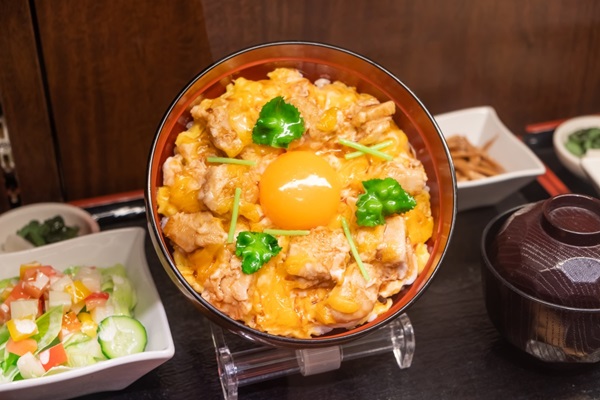
* Picture for illustration purposes only.
Between Ueno Station and Asakusa Station, stretching about eight hundred meters from north to south is the "Kappabashi Tool Street".
With the reconstruction of the Great Kanto Earthquake of 1923, Kappabashi Tool Street began to gather shops that sold handled tools related to "food." Currently, there are about 170 food-related shops. Each store sells pots, pans, kitchen knives, and special tableware. In rare places, there is also a store where you can experience making a sample of foods.
Ganso Shokuhin Sample-ya (Food Sample House) official website
There are various theories about the origin of the name "Kappa Bridge." One theory is that the raincoats made by the young samurai in this area were hung out to dry the raincoats on a nearby bridge on a sunny day. The other is related to a person named Kihachi Gouya. Seeing that this area would be flooded by a little rain, he started construction to prevent flooding. However, the progress was poor, and the kappa of the Sumida River who saw it helped with the construction.
Kappabashi Tool Street Official Website
Famous as the "birthplace of rakugo" and "the place associated with Masaoka Shiki"-"Shimodani Shrine"
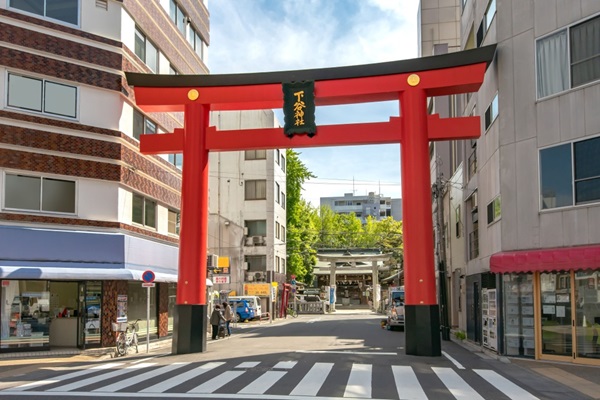
About a 5-minute walk from Ueno Station on the east side is the Shimodani Shrine, built in the Nara period. It is the oldest Inari-sama (*) in Tokyo. In addition, since it is close to Ueno and Asakusa, where commerce is thriving and many residents have lived there for generations, the shrine is known to be beneficial for prosperous business and family safety.
* Grain spirit god and agricultural god
In addition, for the first time in the Edo period, a vaudeville performance for the public was held in the precincts of Shimodani Shrine by rakugo artists. As a result, the Shimodani Shrine is said to be the birthplace of rakugo. In addition, there is a phrase monument written by the Japanese historical haiku poet Masaoka Shiki in Taito Ward and one of the initiatives of Shimodani Shrine is to honor Shiki's achievements.
The Shimodani Shrine Grand Festival, which is held every year at the beginning of May, has a history of more than 1,000 years and is the earliest summer festival downtown. On the event day, many residents and tourists gather to enjoy mikoshi (a portable shrine) and street food full of downtown atmosphere.
Shimodani Shrine Official Website
An old downtown public bath with an open-air bath and sauna-"Kotobukiyu"
About a 10-minute walk east of Ueno Station is a public bathhouse called Kotobukiyu. It is characterized by a temple and shrine-like palace structure (*). Taito Ward is a fierce battleground for public baths, and there are unique public baths scattered throughout Ueno, Asakusa, Iriya, Uguisudani, etc.
* Japan's traditional Karahafu architectural style.
Among them, Kotobukiyu is a refreshing spot visited not only by residents of the Ueno area but also by public bath and sauna fans from all over the world. The features of Kotobukiyu are the sauna and open-air bath. The men's bath has two types of saunas: a regular far-infrared sauna and a salt sauna. Moreover, it is also characterized by an open-air bath with a spacious and expansive view. In the indoor bath, people can enjoy various medicinal baths and the flavors of chocolate and pine candy baths.
Nowadays, there are only three painters who paint the background paintings of public baths in Japan. The background painting of Kotobukiyu is painted by the only female painter among the three. Notably, the background painting is periodically redrawn.
In addition, Kotobukiyu has strong contact with the local community, such as distributing original goods for customers on "Customer Appreciation Day" and distributing drinks for children on Children's Day on May 5.
Kotobukiyu Official site, X (formerly Twitter)
Fun facts about Ueno Station! Is there another station that is closer to Ueno Park than Ueno Station? A level crossing for the metro?
Ueno Station is one of the stations on the Yamanote Line that represents the downtown area. We would like to reveal some fun facts about Ueno Station that might surprise you.
In the past, the nearest station to Ueno Park was not Ueno Station
The nearest station to Ueno Park is Ueno Station (or Keisei Ueno Station), but there used to be a station closer to Ueno Park. That is "Museum Zoo Station".
In 1933, with the operation of the Keisei Main Line, Museum Zoo Station was opened between Nippori Station and Ueno Park Station (now Keisei Ueno Station) to improve accessibility to the Ueno Zoo, the National Museum of Nature and Science, and the Tokyo National Museum. The station building was designed in a Western style by the Ministry of Railways.
However, since it was built on the site of Ueno Park, there is a limit to the size of the station. The platform is so short that only a four-car train can stop, so the number of passengers decreases. Many people who go to museums and zoos now use Keisei Ueno Station next door. As a result, Museum Zoo Station was closed in 1997, but the station building remains as it is today.
In 2018, after the Museum Zoo Station was abolished, it became the first railway facility to be selected as a historical building by the Tokyo Metropolitan Government. As a result, the building of Museum Zoo Station is playing a role as a new cultural hub as a point that connects the surrounding area with art and culture.
There is a level crossing at Ueno Metro Station
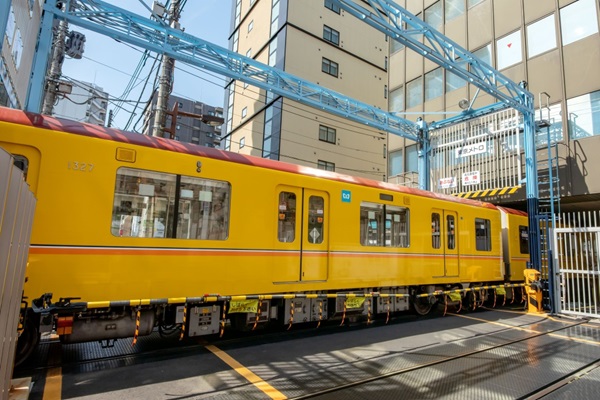
Did you know that there is a railroad level crossing at Ueno Metro Station? Furthermore, this level crossing is not underground, but on the way to the train depot on the ground. Since a part of the track between the train depot and Ueno Metro Station on the Ginza Line crosses the general road, a level crossing is installed.
Level crossings are usually installed so that the tracks are blocked by level crossing barriers and the gates open only when a train passes.
There are trains from the Shibuya direction that stop at Ueno and depart from Ueno to Shibuya. Most of them are heading to the train depot. If people aim before or after the train that stops at Ueno or the first train departing from Ueno, they may be able to see a rare Ginza Line train running on the ground near this level crossing.
Summary
Ueno Station was born from the ease of access to the northern Kanto and Tohoku regions. Today, it has developed into a terminal station where trains arrive and depart from Hokuriku, Joetsu and all-over eastern Japan.
There are many spots around the station where people can experience nature, culture, and art, such as Ueno Park, and there is also a shopping street with a downtown atmosphere, making it an area where it is easy to do daily shopping and grab some meal. In the future, Ueno Station is expected to further develop as a center for art and culture.
If you are considering purchasing real estate around Ueno Station, please refer to the information provided in this article.






